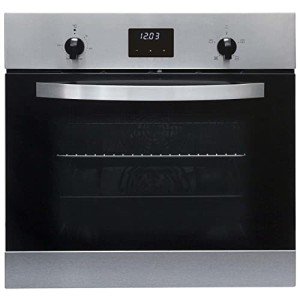Are You Sick Of Hobs And Ovens? 10 Inspirational Sources That Will Bring Back Your Love
Understanding Hobs and Ovens: A Comprehensive Guide for Cooking Enthusiasts
The kitchen is typically considered the heart of the home, where cooking developments come to life. Two vital parts of any kitchen are the hob and the oven. While they are both vital for food preparation and cooking, lots of homeowners may not fully comprehend the differences, functionalities, and various types readily available in the market today. In this post, we will explore these appliances in detail, helping you make informed choices for your cooking needs.
Table of Contents
- What is a Hob?
- 1.1 Types of Hobs
- 1.2 Benefits of Different Hob Types
- What is an Oven?
- 2.1 Types of Ovens
- 2.2 Benefits of Different Oven Types
- Picking the Right Hob and Oven for Your Kitchen
- Frequently Asked Questions (FAQs)
- Conclusion
What is a Hob?
A hob, commonly called a cooktop, is a cooking surface that you put cookware on to prepare food. It features a variety of heating components and is frequently installed on counter tops. In contemporary kitchens, hobs can be found in different styles, technologies, and performances.
1.1 Types of Hobs
There are several types of hobs available in the market:
Type
Description
Gas Hob
Uses burner for cooking, providing precise temperature level control.
Electric Hob
Runs utilizing electrical heating components, frequently seen in strong or radiant kinds.
Induction Hob
Uses electromagnetic fields to heat pots and pans directly, promoting energy effectiveness.
Ceramic Hob
Functions a smooth glass top, using electric coils below the surface.
Strong Plate Hob
Standard electric hobs with exposed metal plates that warm up.
1.2 Benefits of Different Hob Types
Gas Hobs:
- Quick heating & cooling.
- Visual flame control for precise cooking.
Electric Hobs:
- Even heating; suitable for simmering and boiling.
- Easy to clean, specifically flat surfaces.
Induction Hobs:
- Energy-efficient as only the pot warms up.
- Security functions, such as automatic shut-off.
Ceramic Hobs:
- Attractive looks with a smooth surface.
- Even surfaces for easy cleansing.
Solid Plate Hobs:
- Cost-effective and resilient.
- Helpful for fundamental cooking requirements.
What is an Oven?
An oven is a kitchen appliance used for baking, roasting, and broiling food. Ovens can be standalone units or built into kitchen cabinets, providing numerous cooking techniques that can boost or transform components.
2.1 Types of Ovens
Comparable to hobs, there are several kinds of ovens, each with its benefits:
Type
Description
Conventional Oven
Runs with heating aspects, ideal for baking.
Convection Oven
Uses fans to circulate hot air, cooking food uniformly and quickly.
Microwave
Cooks food utilizing electromagnetic radiation; suitable for reheating.
Steam Oven
Utilizes steam to prepare food, maintaining moisture and nutrients.
Wall Oven
Built into the wall, offering convenience and visual appeal.
2.2 Benefits of Different Oven Types
Standard Ovens:
- Simple to use with no complicated settings.
- Versatile for various cooking approaches.
Convection Ovens:
- Faster cooking times due to air circulation.
- Improved browning and crisping for baked products.
Microwave Ovens:
- Quick cooking or reheating of food.
- Energy-efficient for low-volume cooking.
Steam Ovens:
- Health-conscious cooking that maintains nutrients.
- Exceptional for baking bread and cooking veggies.
Wall Ovens:
- Convenient placement; conserves space.
- Less flexing required to access cooking meals.
Selecting the Right Hob and Oven for Your Kitchen
When choosing a hob and oven, elements such as area, cooking design, and individual choices ought to be thought about. Here's an easy guide to assist you select:
Factors to Consider
- Cooking Needs: Evaluate your cooking habits. Do you often bake, or is stovetop cooking more prevalent?
- Area Availability: Measure your offered kitchen space. Some hobs or ovens may need more space than others.
- Fuel Type: Decide between gas and electric, based upon accessibility and personal choices.
- Budget plan: Determine what you're willing to invest and discover alternatives within that range.
Quick Tips
- Prioritize Efficiency: Look for energy-efficient designs to decrease long-lasting costs.
- Check out Reviews: Explore user evaluations to collect opinions on performance and reliability.
- Seek advice from Professionals: Seek advice from kitchen design specialists when preparing your design.
Regularly Asked Questions (FAQs)
1. What is the distinction in between a hob and an oven?
A hob is a cooking surface area usually for stovetop cooking, while an oven is an enclosed area used for baking, roasting, and broiling food.
2. Can I utilize any pot on an induction hob?
No, induction hobs need magnetic cookware. internet site -steel and cast iron pots work, however non-magnetic materials like aluminum won't.
3. How do stove vary from conventional ovens?
Convection ovens utilize fans to distribute hot air for even cooking, whereas conventional ovens do not have this feature.
4. Is it possible to have both a hob and oven as a single unit?
Yes, there are variety cookers that integrate a hob and an oven within one device, providing a thorough cooking service.
5. How do I clean my hob and oven?
Many hobs and ovens have actually suggested cleaning methods depending on their materials. It is suggested to consult the manufacturer's instructions for the best practices.
Comprehending the distinctions in between hobs and ovens is important for anyone aiming to enhance their kitchen space or improve their cooking skills. By knowing the different types, their benefits, and how to pick the ideal ones for your needs, cooking can end up being a more satisfying and efficient experience. Whether you are an experienced chef or a novice cook, the right mix of hob and oven can raise your cooking productions to brand-new heights.
